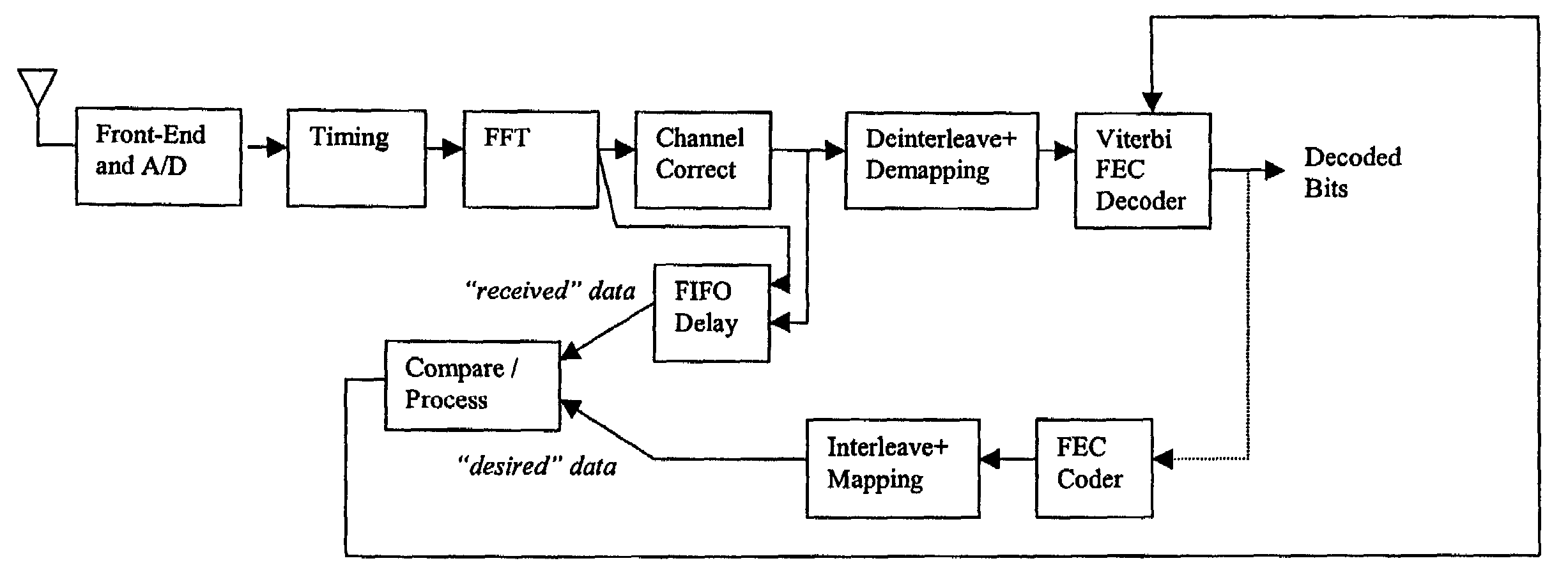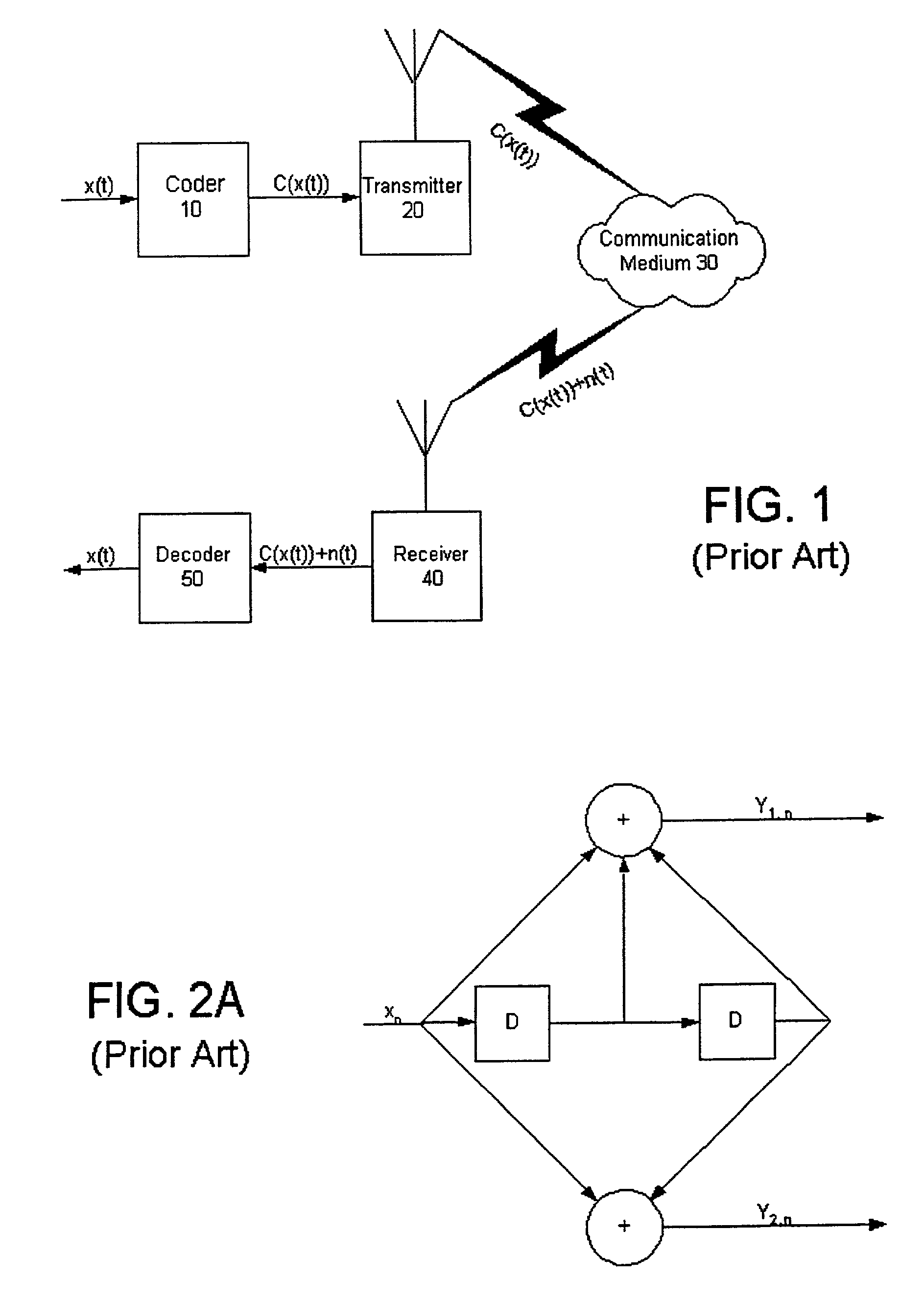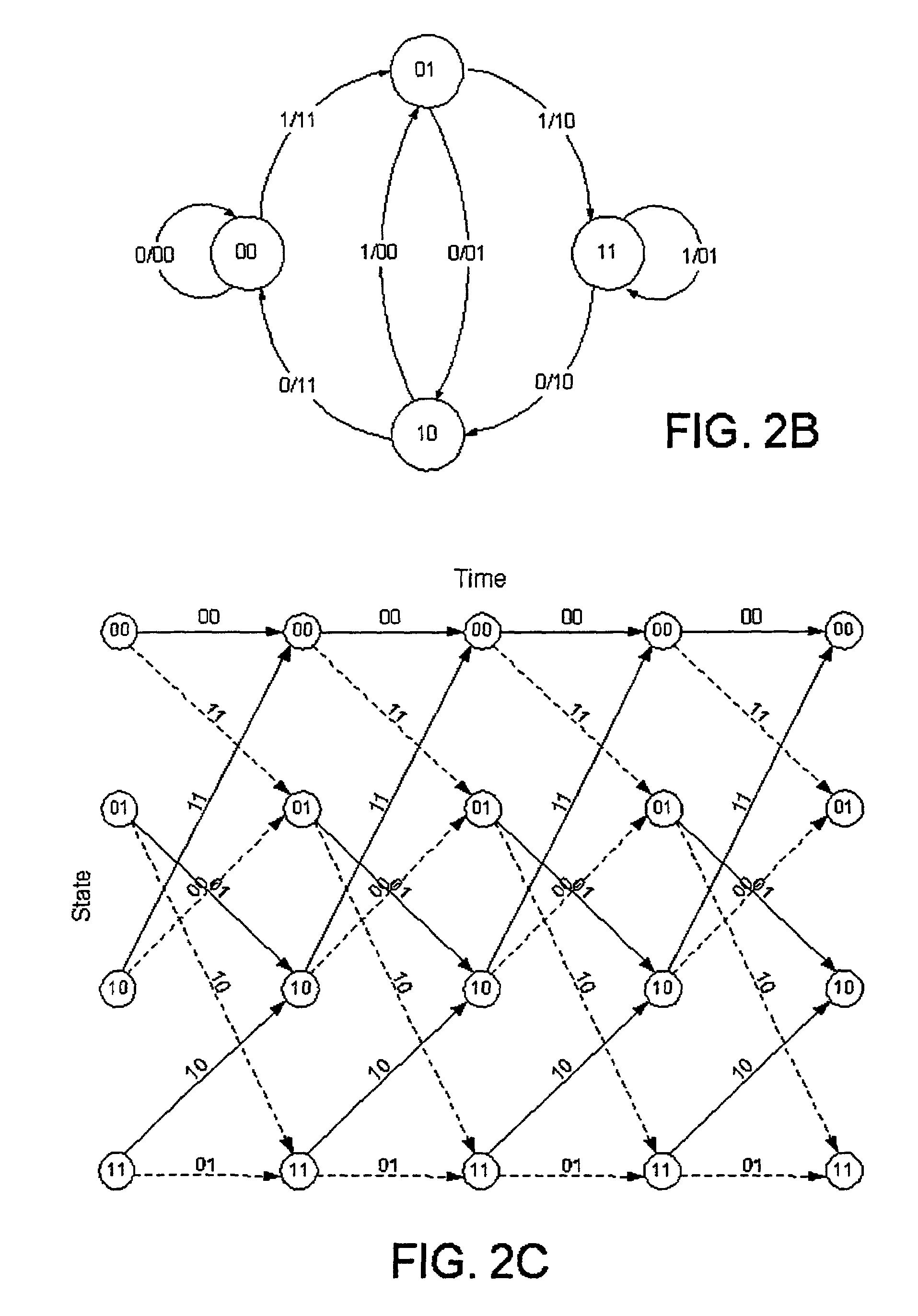Decoding system and method for digital communications
a decoding system and digital communication technology, applied in the field of digital communication systems, can solve the problems of not always practical to directly implement the algorithm in this way, restrict the type of decoding system that can be used, and corrupt the signal, so as to reduce the number of uncorrectable errors and packet loss
- Summary
- Abstract
- Description
- Claims
- Application Information
AI Technical Summary
Benefits of technology
Problems solved by technology
Method used
Image
Examples
Embodiment Construction
[0060]The above arrangement described in the Background section works relatively well if the digital information is used to modulate the carrier signal directly; however, this is not always the case. For a variety of reasons, some communication systems employ alternative arrangements. For example, the IEEE 802.11 a communication standard uses a quadrature amplitude modulation (QAM) system in which the modulated carrier signal does not directly correspond to the information being transmitted, but to a position in a two-dimensional array or “constellation” of possible binary values. This constellation is known to the sender and receiver, so that a position transmitted to a receiving station can be accurately correlated with a corresponding digital sequence in the constellation.
[0061]Consider FIG. 5. This is a constellation which might be used in a 16QAM (16 bit quadrature amplitude modulation) coding system. Here, rather than providing a single digital output to the decoder 50, the re...
PUM
 Login to View More
Login to View More Abstract
Description
Claims
Application Information
 Login to View More
Login to View More - R&D
- Intellectual Property
- Life Sciences
- Materials
- Tech Scout
- Unparalleled Data Quality
- Higher Quality Content
- 60% Fewer Hallucinations
Browse by: Latest US Patents, China's latest patents, Technical Efficacy Thesaurus, Application Domain, Technology Topic, Popular Technical Reports.
© 2025 PatSnap. All rights reserved.Legal|Privacy policy|Modern Slavery Act Transparency Statement|Sitemap|About US| Contact US: help@patsnap.com



